The trail of the washerwomen – Il sentiero delle lavandaie
The trail of the washerwomen is located in the east of Perugia and has an interesting historical background. It starts at the Porta della Pesa, one of the ancient city gates in the east of the city, and leads straight down to a little town called Pretola, which is almost surrounded by the river Tiber.
So in the 19th century, the washerwomen of Perugia went down there to wash the laundry of the city’s wealthy people and of the public institutions. From the 19th century until the 1950s, Pretola was a veritable open-air laundry for the city of Perugia. This open-air laundry was located between two locks on the Tiber, one in the north of Pretola and one in the south.
For the laundresses this current and narrow path was, so to speak, the shortcut from the city gate of Perugia to the Tiber. However the large oxcarts that transported the laundry had to use a much longer passable road to get to Pretola.
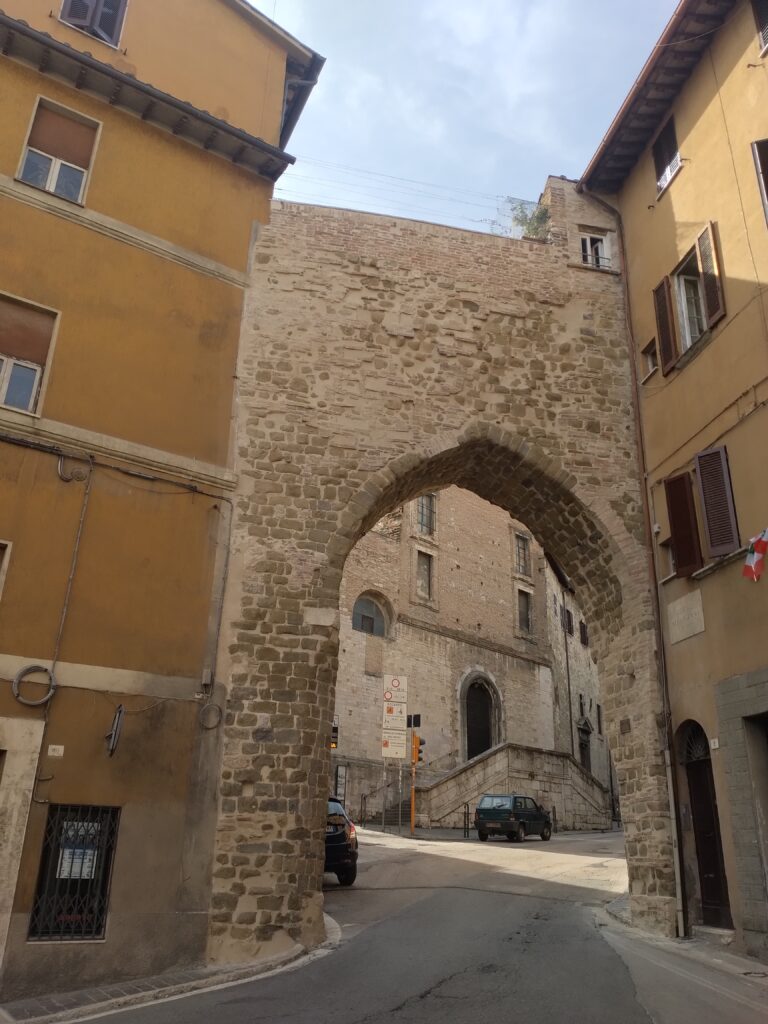
But in that era Pretola was much more than that: people at that time developed a real industrial network that optimally connected various professions all in some way linked to the Tiber.
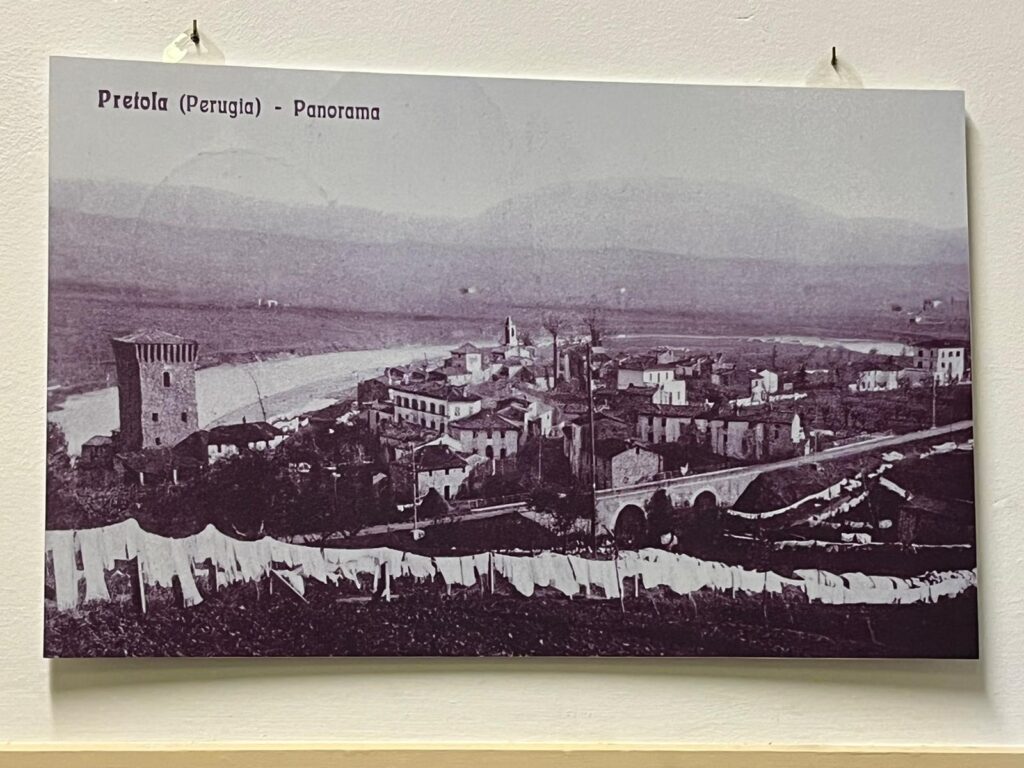
The Tiber
The Tiber is 405 km long, it rises from Monte Fumaiolo in the Apennines, on the border between Tuscany and Marche. After passing Tuscany very briefly it then mainly runs through Umbria and Lazio, before flowing into the Tyrrhenian Sea at Fiumicino and Ostia in the west of Rome.
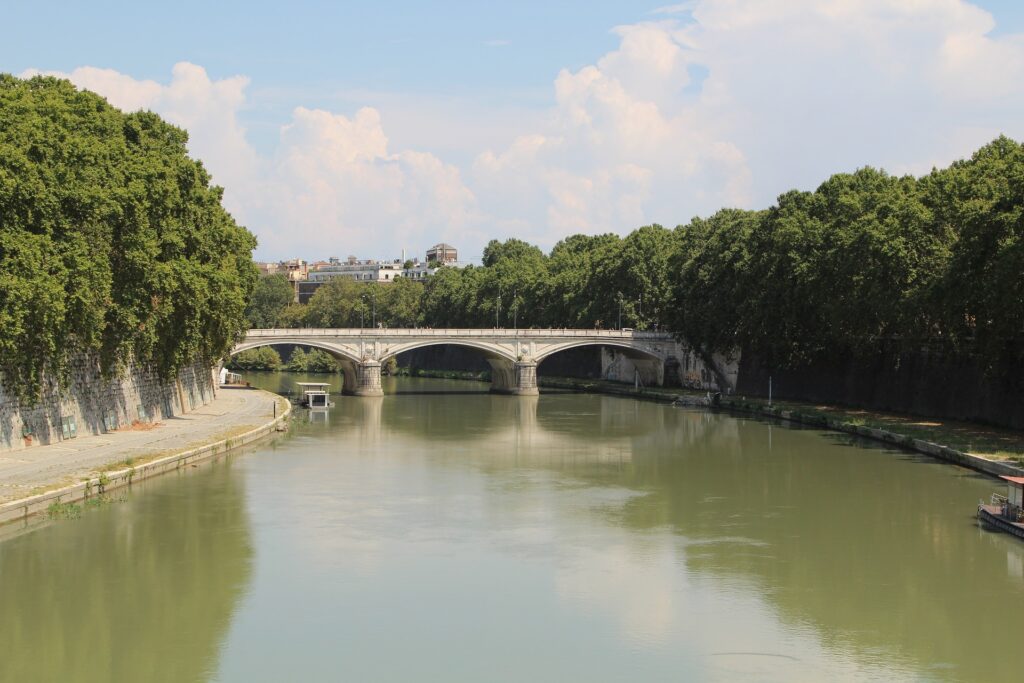
Over thousands of years, the Tiber has witnessed many tribes and shaped countless historical events. Since the era of the Etruscans and Umbrians, the banks along the Tiber were always populated with castles and fortified settlements.
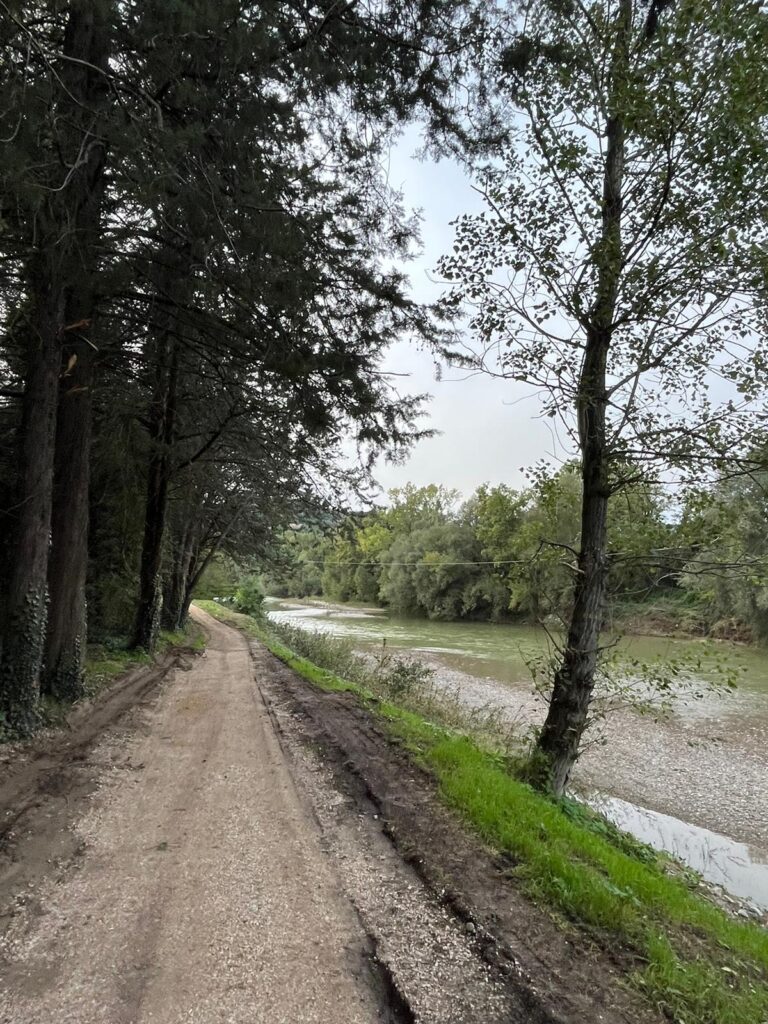
Pretola
This small village has about 1000 inhabitants and is located a few kilometres to the east of the city of Perugia.
To the North and to the South of Pretola there were two sluices in the Tiber, of which only some very sparse remains of the first, the one near the watchtower, can be seen today.
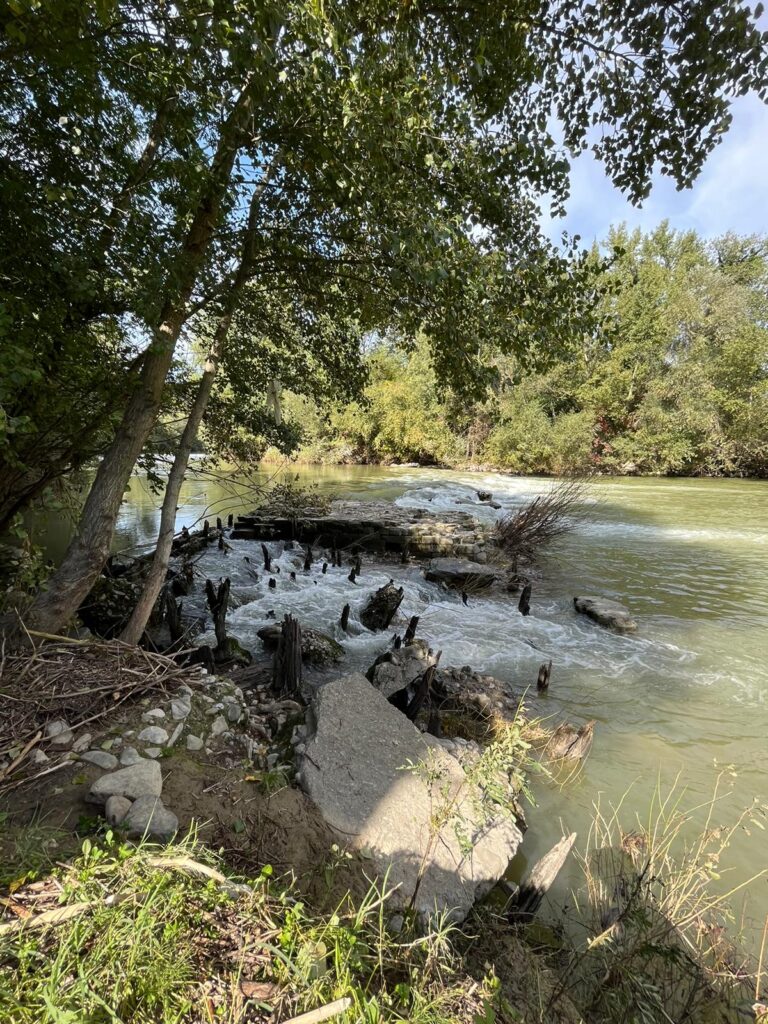

Near the tower there was also once a flour mill, probably built by monks.

This beautiful model of the former flour mill was made by an engineer and donated to the museum
The mill was relatively good protected from enemy attack by the large hill towards Perugia and also by the bridges over the Tiber, which were far away. Nevertheless, between 1367 and 1370, the ruling family of the time, the Boccolis, had a watchtower built. They wanted to protect the mill and their own houses. (which were situated in the immediate vicinity of the mill).
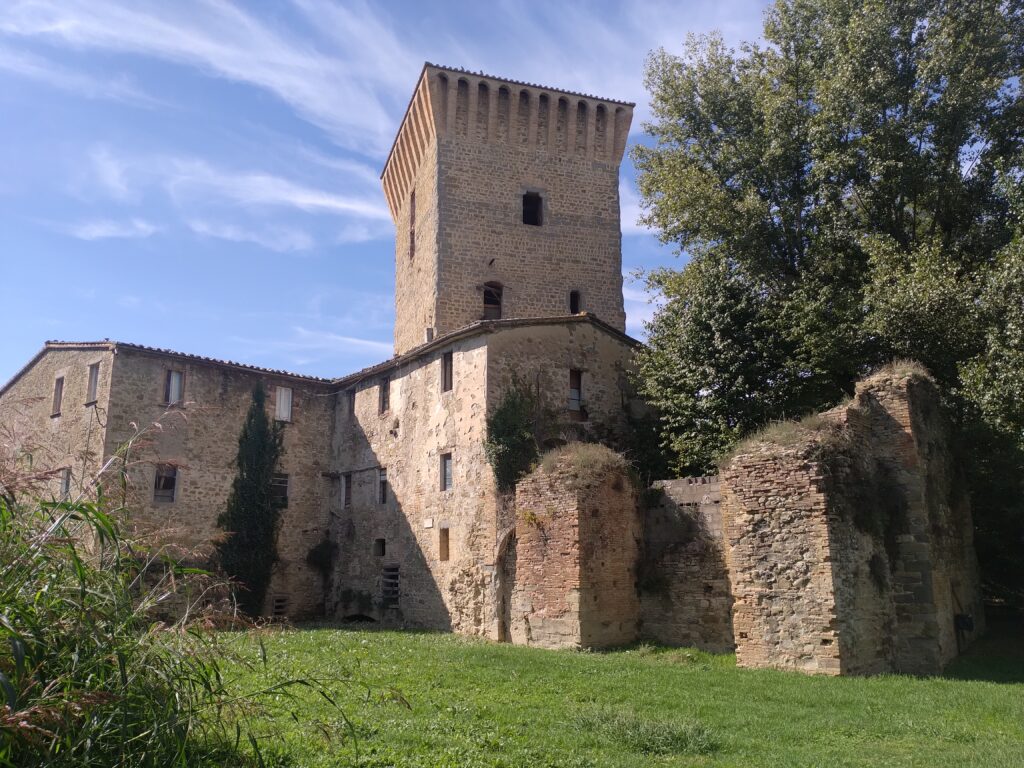
In the ensuing twist between the poor and the rich the properties including the mill fell into the hands of the notorious nobleman and leader Braccio Fortebraccio. He destroyed all of Pretola’s houses and villas in 1410 and completely burned down the mill. However the watchtower was spared and can only be visited from the outside.
The industrial network at the time (1900-1950)
Pebbles and stones
The Tiber is said to have carried many small pebbles in the section between the two sluices, and also larger stones which were well suited for the washboards. The pebbles were removed by the quarrymen and used in the construction of houses.
Tobacco, wine and fruit
There is also evidence that, along with tobacco and wine, there has been fruit growing on the shore, most of all pears.
Grain and hemp
In addition to tobacco and other fruit the many, large stretches of land on both sides of the Tiber, which once seemed to have been forested, were now cultivated by farmers mainly with grain and hemp.
Wood
Also there were the wood gatherers, active mostly in spring or autumn: they harpooned tree trunks which were carried away by floods in the Tiber and collected them with a hook usually made of field maple. Their technique was that of a “roper”. At that time about 10 families of wood gatherers lived in Pretola.
On the website of the Ecomuseum (see below), you can watch this ancient tradition of collecting wood in a video (L’UNCINAIA, UNA TRADIZIONE ANTICCHISSIMA).
Ovens
The collected wood was dried in the air, but also in ovens (located at the watchtower) and used for hot water, which in turn served the washerwomen for their washing. At the time there were about 400 washerwomen working in Pretola.
Ferries
Since there were hardly any bridges over the Tiber, ferries were used, which were really nothing more than a wooden raft on which just one single cart pulled by two oxen could fit.

The washerwomen
The inhabitants brought their dirty laundry to the above mentioned town gate Porta della Pesa. There it was weighed and marked with a coloured cotton thread by the washerwomen before getting loaded onto the carts. And then the oxen pulled the carts full of laundry along a road of about 4.5 km to the Tiber at Pretola, where the washerwomen then collected the laundry.
The oxcarts
The now empty oxcarts got reloaded with fruit, grapes or tobacco leaves and sent back to the city. Additionally the carryhen used the carts to transport the pebbles to their working locations. Sometimes the oxen carts also travelled empty by ferry across the Tiber to the other bank, from where they returned with grain or hemp. After the grain was ground directly in the mill at the watchtower it was brought up to the city. The hemp was used to make laundry lines or ropes and cords, which in turn were used to harness the oxen to the carts. Besides, there were also silk spinning mills in Pretola.
The washerwomen trail
The trail of the washerwomen itself, il sentiero delle lavandaie, was first mentioned in 1299. After that, it was used for centuries by market women who came from outside the city to the markets in Perugia. Also it was also taken by the bathers who wanted to swim in the Tiber or by anglers. Even the military held exercises there. And lastly, until 1968, the trail served to the washerwomen.
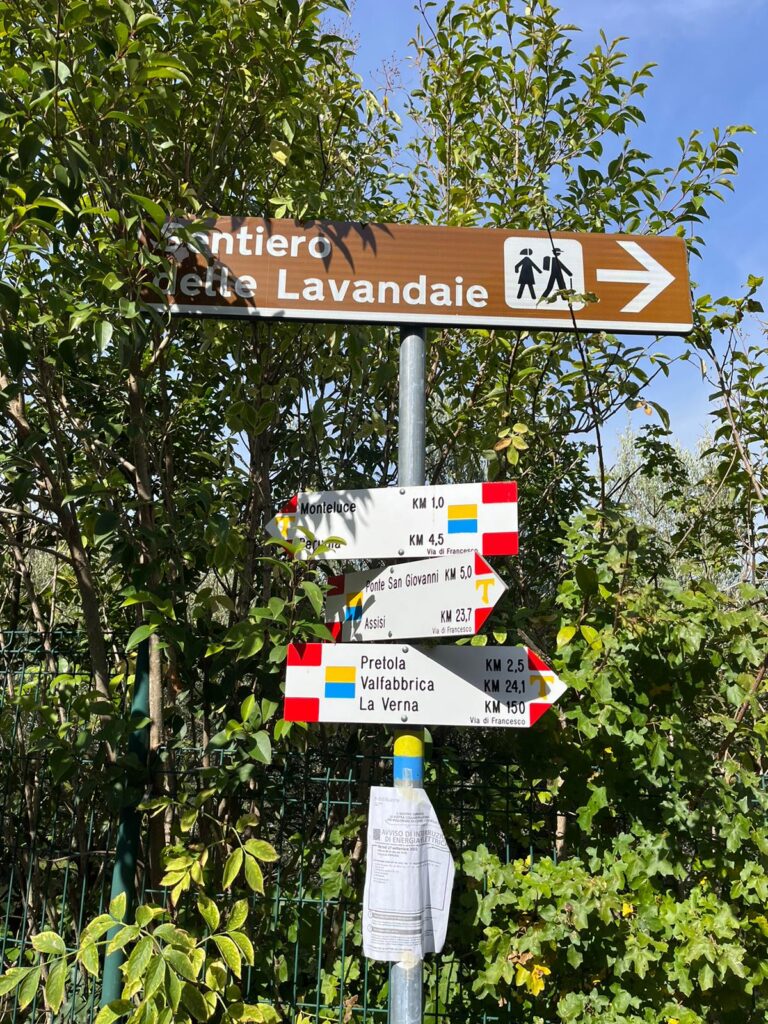
But it was only in 2010-2011 that the trail of the washerwomen could be restored and made accessible again thanks to local volunteers and with the support of the municipality of Perugia.
Unfortunately, despite its promising name, the trail of the washerwomen is no longer of much interest today. However I cannot really recommend it, because the hiking route (with Pretola as the starting point) is mostly uphill. It leads through boring forest sections or along bits of an asphalted road. But you pass one or two large old villas (not open for public) and a very old olive mill that is still intact.


Quite close to the town there is a well (Fontana Fontenuovo) on the right side of the road, which is no longer in good condition. Also for the last part of the trail you walk along cars and all kinds of educational institutions and school buildings.
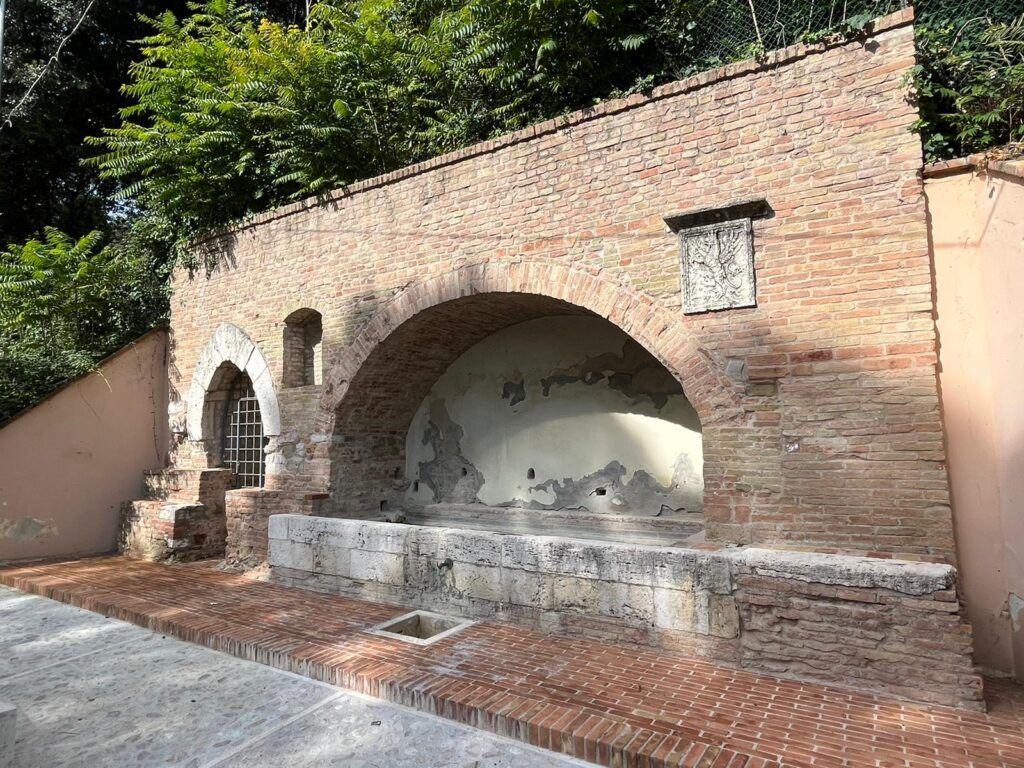
At the top of the town gate, Porta della Pesa, there is nothing special to see apart from the gate itself. You could, of course, take a detour to Via della Viola, not far away, inside Perugia’s city walls. I think you should actually take more time to visit Perugia… Still you could stop at the students´ café (with pastry shop) Pasticceria 2000 opposite the city gate.
Basically the only sign giving you a little information on the trail of the washerwomen and its history can be found in Pretola near the watchtower.
The Ecomuseum
Now – the Ecomuseum del Tevere in Pretola itself is absolutely worth a visit. Please park your car park in front of the watchtower, then walk back to the main road and turn left. And you will soon stand in front of the former primary school (scuola elementare) on the left-hand side of the road. This IS the museum.
Ecomuseo del Tevere (ex-Scuola elementare) – Via Tagliamento, 50 – 06134 Pretola (PG)
It is advisable to check the opening hours: +39 334 534 7998.
On each floor of the building and in the spacious staircase you can see incredible, well-preserved objects, pictures, etc. and let take yourself back to the time of the washerwomen – THAT is truly a fascinating experience.
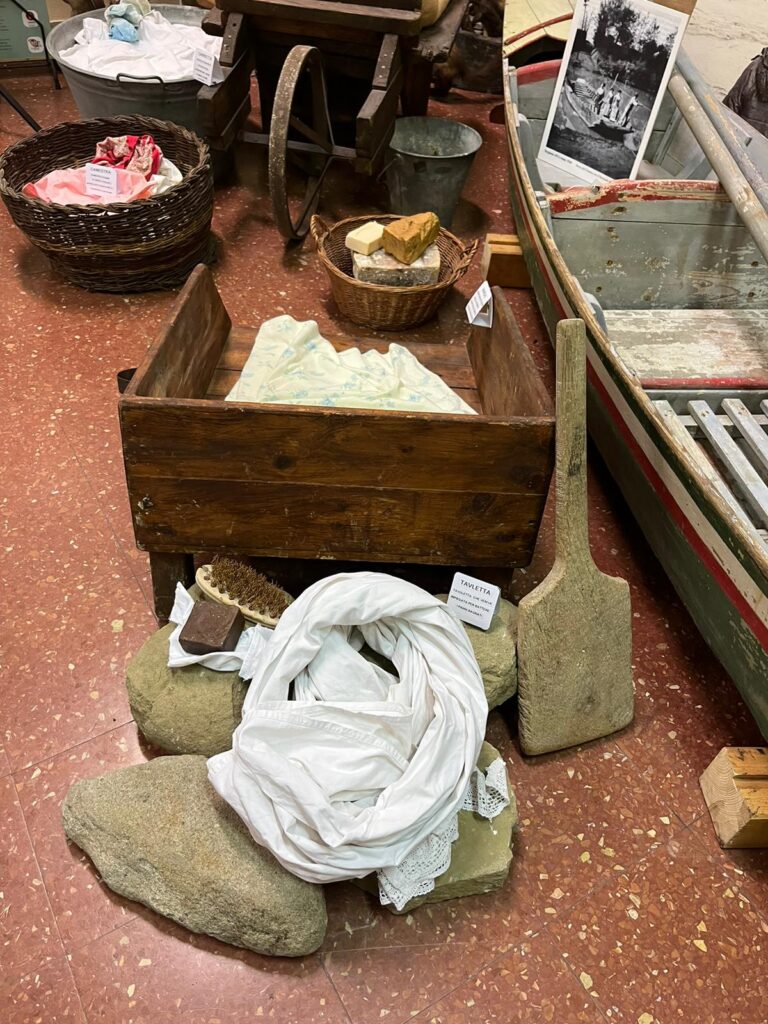
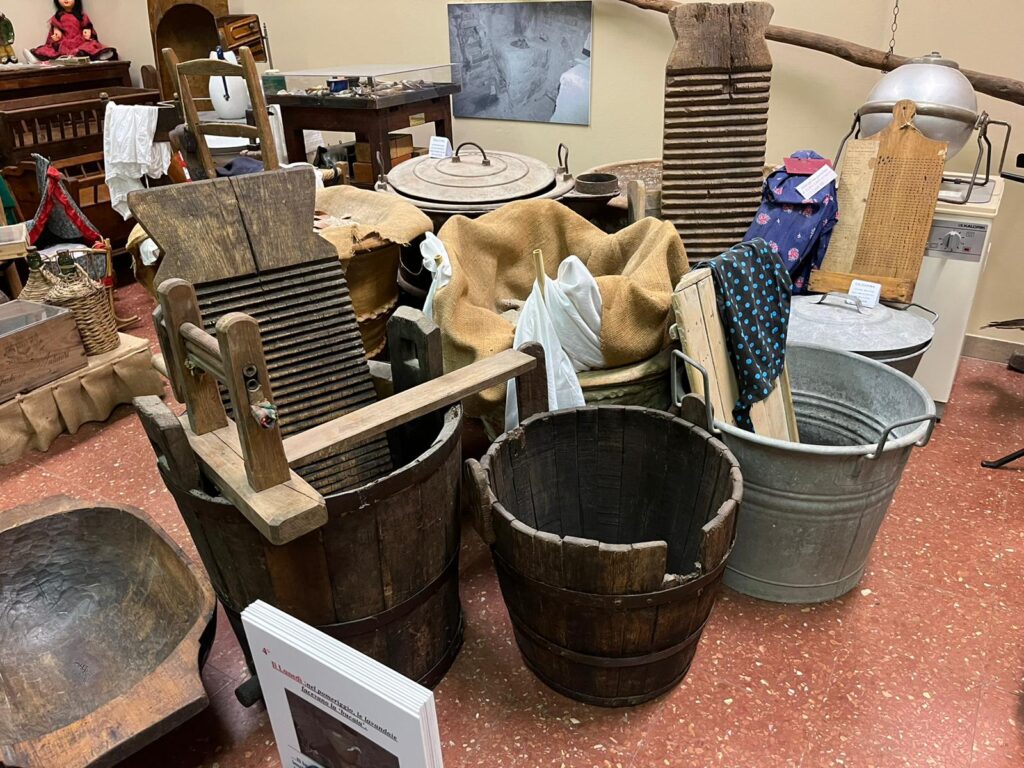
The two older gentlemen who would normally guide you through the museum (including video presentations) are unfortunately only fluent in Italian, but I’m happy to go along with you and translate.

It is really fascinating that the entire Ecomuseo was launched in 2004 and has since developed into a dynamic socio-cultural, economic and now also legal project. This could only happen with the help of volunteers. And the Ecomuseum has been officially recognised by the Region of Umbria since 2013. There are 5 of such museums in an area of 300 square kilometres along the Tiber.
I can highly recommend the really good website of the Ecomuseo del Tevere!
http://www.ecomuseodeltevere.it
It gives you a great impression of the time of the washerwomen (lavandaie), with interviews and stories by Elda Giovagnoni, the last of these washerwomen (she died in 2015 at the age of 90), with beautiful black and white pictures, maps and explanations. It even describes a whole day or week of a washerwomans´life.
Here, too, I am happy to offer my help, we can visit the website together and I will translate.
My advice
If you would like to take a walk before or after visiting the Ecomuseum, I recommend the paths along the Tiber.
